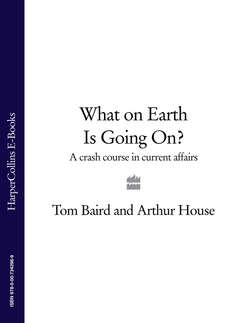Читать книгу What on Earth is Going On?: A Crash Course in Current Affairs - Arthur House - Страница 11
ОглавлениеBurma
Where is it?
Burma is the largest country in mainland South-East Asia, situated between Bangladesh and Thailand on the Bay of Bengal. It sits on plentiful natural resources, including precious stones, gas and oil, which neighbouring giants China and India are keen to get their hands on. However, rather than benefiting from these resources, the people of this once prosperous country have lived in poverty for decades under a corrupt and authoritarian military regime.
What happened after Burma became independent?
Burma gained its independence from the British Empire in 1948, and after a period of instability General Ne Win seized power in a military coup in 1962. Ne Win quickly set about introducing the ‘Burmese Way to Socialism’, a 28-point manifesto which nationalised all industry and trade, devastated the economy and isolated Burma from the international community. Since military rule began, political opposition has been consistently shackled and human rights have been abused. Ne Win remained president until 1981, but clung on to his role as Chairman until he finally resigned in 1988. Internal bickering among the military leaders then caused the constitution to be annulled, and a re-shuffled military regime emerged which called itself the State Law and Order Restoration Council, later renamed the State Peace and Development Council. They remain in charge under General Than Shwe, head of state since 1992.
What’s in a name?
In 1989, the new military junta changed Burma’s name to Myanmar, in an attempt to rid the country of its colonial ties. However, the country’s democratic movement continue to use Burma on the basis that it is not legitimate for an unelected regime to change a country’s name. While some countries, including Britain, the US and Canada, continue to refer to Burma, others such as China, Germany and Japan have adopted Myanmar. The United Nations also recognises Myanmar.
Is there any opposition from within?
Yes. In the face of this oppressive regime, Aung San Suu Kyi has consistently campaigned for democracy, her efforts winning her the Nobel Peace Prize in 1991. Her father is a national hero, having led the Anti-Fascist People’s Freedom League to fight with the British against Japanese occupation in 1945. After studying and living in the UK, Kyi returned to her homeland in 1988, though for much of the time since then she has lived under house arrest. The National League for Democracy, which she leads, won the last elections—held in 1990—with 392 out of 492 seats, but the military’s grip on the country continued unabated.
Have the Burmese people protested against the regime?
Yes. In 1988, prompted by Ne Win’s resignation, hundreds of thousands of demonstrators called for an end to the regime. The military reaction resulted in the deaths of around 3,000 people. In 2007, against the backdrop of rising fuel prices, Burma’s monks protested after the military broke up a peaceful rally. As the number of protesting monks grew, so did images of them flooding the streets. Their courage in openly demonstrating against the junta, captured in newspapers, on
George Orwell, the novelist whose works include Nineteen Eighty-Four and Animal Farm, served in the Indian Imperial Police in Burma during colonial rule. The country also provided the inspiration for his first novel, Burmese Days (1934).
television and on the internet, dramatically focused the world’s attention on the country’s oppressive regime. Since then the monks have paid a heavy price, with jail sentences of up to 65 years being handed down to some of the protest’s chief instigators.
Cyclone Nargis
Burma is no stranger to natural disasters. Since 1900 there have been around 15 cyclones, 5 earthquakes and 13 floods. In May 2008, 130,000 people died in Cyclone Nargis, which also left hundreds of thousands homeless. In the aftermath of the cyclone, Burma’s government were criticised for their handling of the crisis and stubbornness in refusing to accept international aid. One bizarre twist was the arrest of a popular Burmese comedian, Zarganar, who had rallied a group of around 400 volunteers to deliver essential aid to remote areas.
Sly saves the day
In the fourth Rambo film (2008), which boasts more on-screen deaths (262) than any of the other films in the franchise, Vietnam veteran John Rambo, played by Sylvester Stallone, once again saves the day. While enjoying a simple and secluded life capturing snakes for a living in Thailand, Sly’s peace is disturbed by a group of Christian human rights missionaries who appeal for him to ferry them on a dangerous trip upriver into Burma. Sly reluctantly agrees and, after running into all kinds of trouble, ends up defeating the Burmese army. When speaking to reporters about the film, Stallone confronted the Burmese junta: ‘If they think this movie is a fantasy, I welcome the opportunity to let me come over there and walk around the country without armed guards following me every inch of the way.’
